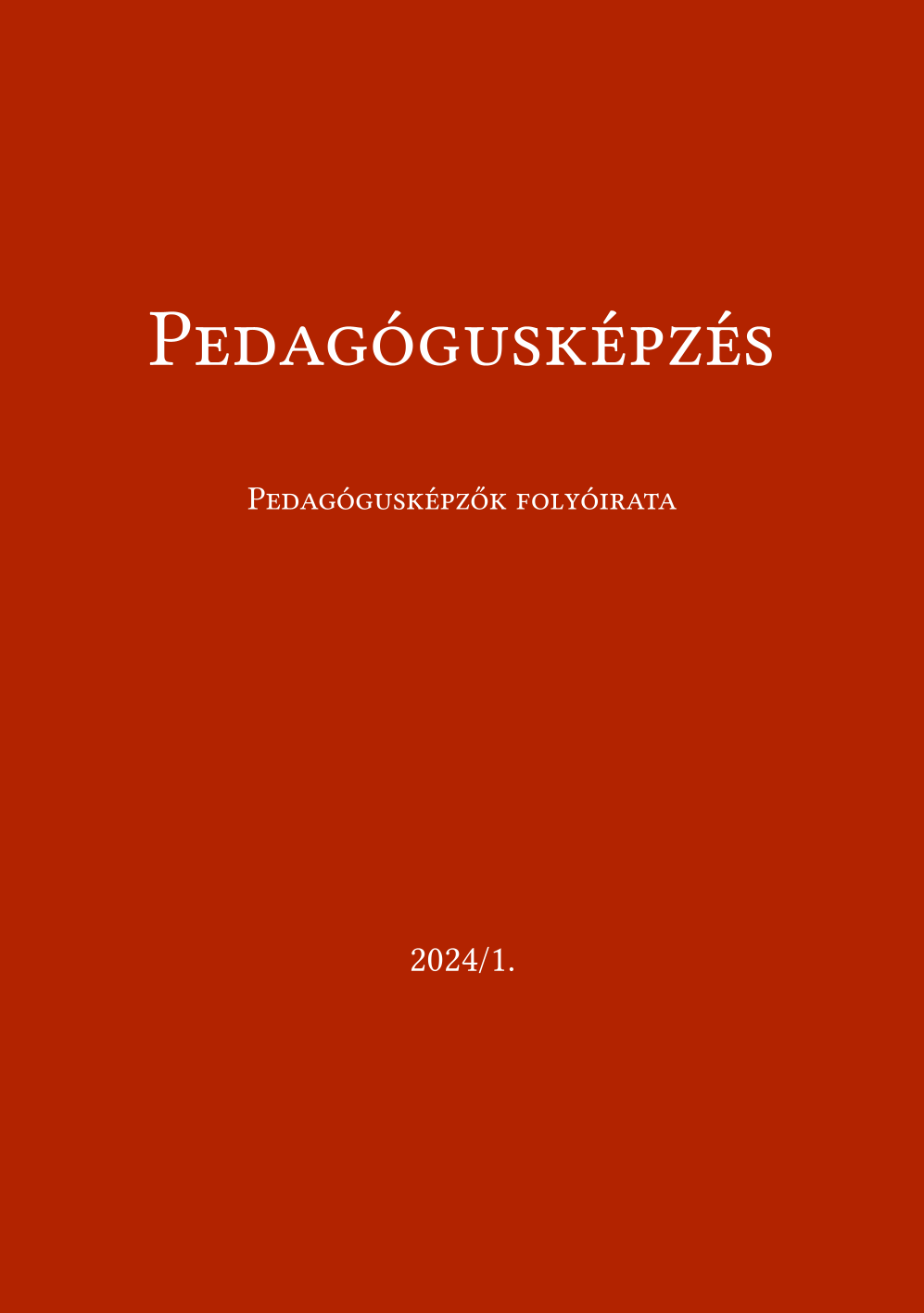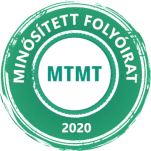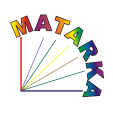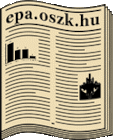A tanárképzők szakmai fejlődését támogató szakmai tanulási közösségek a mianmari tanárképző főiskolákon
DOI:
https://doi.org/10.37205/TEL-hun.2024.1.02Kulcsszavak:
szakmai tanulási közösség, szakmai fejlődés, pedagógusképzőkAbsztrakt
A pedagógusoknak fejleszteniük kell szakmai tudásukat annak érdekében, hogy tanulóik minél többet profitálhassanak a közös munkából. A szakmai tanulási közösségek nemcsak az egyes tanárok és az egész tantestület igényeit elégítik ki, hanem javítják a tanítás minőségét is, és ezen keresztül növelik a diákok teljesítményét.
A szakmai tanulási közösségekben a diákok hatékonyabb tanulásának kulcsa a tanárok folyamatos tanulása (Bryk, Camburn & Louis, 2009). A szakmai tanuló közösségek (angolul Professional Learning Community: PLC) keretében végzett munka egyre népszerűbb útja a pedagógusok szakmai fejlődésének, és ennek következtében szükség van a hatásukat feltáró kutatásokra is.
E tanulmány célja, hogy feltérképezze a szakmai tanulási közösségek bevezetésének hatásait egy mianmari tanárképző főiskolán, valamint azt, hogy e közösségek hogyan hatnak a tanárképzők munkájának minőségére, és remélhetőleg ezáltal a tanárszakos hallgatók teljesítményére.
Módszertanilag a tanulmány kvalitatív megközelítést és véletlenszerű mintát alkalmazott, hogy adatokat szerezzen a Monywa Tanárképző Főiskola oktatóitól, akik nyílt végű interjúkérdésekre válaszoltak. Az adatokból kiderült, hogy a jelenlegi helyzetben a tanárképzők szakmai fejlődésének elősegítése érdekében több szakmai tanulási közösségre van szükség, és hatékony működésükhöz széles körű pedagógiai támogatást kell nyújtani.
Hivatkozások
Bretz, N. L. (2012). Using professional learning communities to increase student achievement. Ed. D., Northeastern University.
Bryk, A., Camburn, E. & Louis, K. S. (1999). Professional community in Chicago elementary schools: Facilitating factors and organizational consequences. Educational administration quarterly, 35(5), 751–781. https://doi.org/10.1177/00 1316 1X993 5500 4
Bush, T. & Glover, D. (2014). School leadership models: What do we know? School Leadership & Management, 34(5), 553–571. https://doi.org/10.1080/136 3243 4.2014.928680
Caskey, M. M. & Carpenter, J. (2012). Organizational models for teacher learning. Middle School Journal, 43(5), 52–62.
Cordingley, P., Bell, M., Rundell, B. & Evans, D. (2005). The impact of collaborative continuing professional development (CPD) on classroom teaching and learning. In: Research Evidence in Education Library. EPPI-Centre, Social Science Research Unit, Institute of Education.
Cuddapah, J. L. & Clayton, C. D. (2011). Using Wenger’s communities of practice to explore a new teacher cohort. Journal of Teacher Education, 62(1), 62–75. https://doi.org/10.1177/00 2248 71103775 07
Danielson, C. (2002). Enhancing student achievement: A framework for school improvement. ASCD.
Darling-Hammond, L. & McLaughlin, M. W. (1995). Policies that support professional development in an era of reform. Phi Delta Kappan, 76(8), 597.
Darling-Hammond, L. (1998). Teachers and teaching: Testing policy hypotheses from a national commission report. Educational Researcher, 27(1), 5–15.
Darling-Hammond, L., & Richardson, N. (2009). Teacher learning: What matters? Educational Leadership, 66(5), 46–53.
Donohoo, J. (2017). Collective Efficacy. Corwin.
DuFour, R. (2004). Leading edge: The best staff development is in the workplace, not in a workshop. Journal of Staff Development, 25(2), 63–64.
DuFour, R., DuFour, R., Eaker, R. & Many, T. (2006). Learning by doing: A handbook for professional learning communities that work. Solution Tree.
Dufour, R., Dufour, R. & Eaker, R. (2008). Revisiting professional learning communities at work: New insights for improving schools. Solution Tree.
Dufour, R. (2011). Work together: But only if you want to. Phi Delta Kappan, 92(5), 57– 61. doi:10.1177/00 3172 17110920 051 3
Fogarty, R. & Pete, B. (2010). Professional learning 101: A syllabus of seven protocols. Phi Delta Kappan, 91(4), 32–34. https://doi.org/10.1177/00 3172 17100910 040 7
Fullan, M. (2007). The new meaning of educational change. Teachers College.
Hansen, B. & Larusdottir, S. H. (2015). Instructional leadership in compulsory schools in Iceland and the role of school principals. Scandinavian Journal of Educational Research, 59(5), 583–603. https://doi.org/ 10.1080/003 1383 1.2014.965788
Harada, V. H. (2001). Professional development as collaborative inquiry. Knowledge Quest, 29(5), 13–19.
Harris, A., & Jones, M. (2010). Professional learning communities and system improvement. Improving Schools, 13(2), 172–181. doi:10.1177/13 6548 02103764 87
Hellner, J. (2008). The professional learning community: A fulcrum of change.
Kairaranga, 9(1), 50–53. https://doi.org/10.54322/kairaranga.v9i1.110
Hord, S. M. (1997). Professional learning communities: Communities of continuous inquiry and improvement. Southwest Educational Development Laboratory.
Hord, S. M. (2004). Learning together, leading together: Changing schools through professional learning communities. Teachers College.
Hord, S. & Sommers W. A. (2008). Leading professional learning communities: Voices from research and practice. Corwin Press & National Association of Secondary School Principals.
Hord, S. M. (2008). Evolution of Professional Learning Community. Journal of Staff Development. 29(3), 10–13.
Humphries, M. G. (2002). A case study of a professional development model linking arts- based teaching practices to classroom instruction. Dissertation Abstracts International, 64(11), 1–311.
Kennedy, A., Deuel, A., Nelson, T. H. & Slavit, D. (2011). Requiring collaboration or distributing leadership. Phi Delta Kappan, 92(8), 20–24. https://doi.org/10.1177/00 3172 17110920 080 5
Leclerc, M., Moreau, A. C., Dumouchel, C. & Sallafranque-St-Louis, F. (2012). Factors that promote progression in schools functioning as professional learning community. International Journal of Education Policy & Leadership, 7(7), 1–14.
Leithwood, K. & Jantzi, D. (2000). Principal and teacher leadership effects: A replication. School Leadership & Management, 20(4), 415–434. https://doi.org/10.1080/7136 9696 3
Linder, R. A., Post, G. & Calabrese, K. (2012). Professional learning communities: Practices for successful implementation. Delta Kappa Gamma Bulletin, 78(3), 13–22.
Little, J. W. (1990). The persistence of privacy: Autonomy and initiatives in teachers’ professional relations. Teachers College Record, 91(4), 509–536. https://doi.org/10.1177/01 6146 81900910 040 3
Little, J. W. (1997). Excellence in professional development and professional community. Washington, D.C. Office of Educational Research and Improvement
Louis, K. S. & Kruse, S. D. (1995). Professionalism and community: Perspectives on reforming urban schools. Corwin Press.
Lwin, P. K. K. & Ye, Y. (2021). A study of the relationship between teachers’ perceptions towards school climate and the professional learning community at a private school, Myanmar. Scholar: Human Sciences, 13(1), 1–14.
Maldonado, L. & Victoreen, J. (2002). Effective professional development: Findings from research. College Entrance Examination Board.
Mckenna, Amy. (2021). In the History and Government and society sections. https://www.britannica.com/place/Myanmar
Ministry of Education (2012). Education development in Myanmar.
Ministry of Education (2014). National EFA Review Report.
Ministry of Education (2015). Myanmar National Education Strategic Plan (2016–2021).
Ministry of Labour, Immigration and Population (2020). Department of Population. http://www.dop.gov.mm/en
Morrissey, M. S. (2000). Professional learning communities: An ongoing exploration. Southwest Educational Development Laboratory.
Neuzil, L. M. & Vaughn, M. (2010, Summer). An examination of professional development activities available to teachers in the mid-America region of the association of Christian schools international. A Journal of the International Christian Community for Teacher Education, 5(1), 1–15. http://icctejournal.org/ issues/v5il/v5il-professional-development
OECD (2011). Preparing Teachers and Developing School Leaders for 21st Century – Lessons from around the world.
Owens, M. A. (2010). Creating a successful professional culture: Reorganizing to rebuild a challenging school. Journal of Cases in Educational Leadership, 13(4),1–10. https://doi.org/10.1177/15 5545 89103777 85
Panella, E. (1999). Toward better teaching: Partnerships that make a difference. The High School Magazine, 7(2), 40–43.
Robinson, V. M., Hohepa, M. & Lloyd, C. (2007). School leadership and student outcomes: Identifying what works and why. Australian Council for Educational Leaders.
Sirotnik, K. A. (1999). Making sense of educational renewal. Phi Delta Kappan, 80(8), 606–610.
Smith, M. & Allsebrook, A. (1994). Ethnic groups in Burma. Anti-Slavery International.
Stoll, L., Bolam, R., McMahon, A., Thomas, S., Wallace, M., Greenwood, A. & Hawkey, K. (2005). Creating and sustaining effective professional learning communities. National College for School Leadership.
Tschannen-Moran, M. & Barr, M. (2004). Fostering student learning: The relationship of collective teacher efficacy and student achievement. Leadership and Policy in Schools, 3(3), 189–209. https://doi.org/10.1080/15 7007 60490503 70 6
UNESCO Yangon Project Office (2020). Strengthening pre-service teacher education in Myanmar (STEM): Phase II. Final narrative report.
https://unesdoc.unesco.org/ark:/482 23/pf00 0037 5111
UNICEF & UNESCO. (2021). Situation Analysis on the Effects of and Responses to COVID–19 on the Education Sector in Southeast Asia.
Van Driel, J. H. & Berry, A. (2012). Teacher professional development focusing on pedagogical content knowledge. Educational Researcher, 41(1), 26–28. https://doi.org/10.3102/00 1318 9X114 3101 0
##submission.downloads##
Megjelent
Hogyan kell idézni
Folyóiratszám
Rovat
License
Copyright (c) 2024 A szerző(k)

This work is licensed under a Creative Commons Attribution-NonCommercial-NoDerivatives 4.0 International License.








